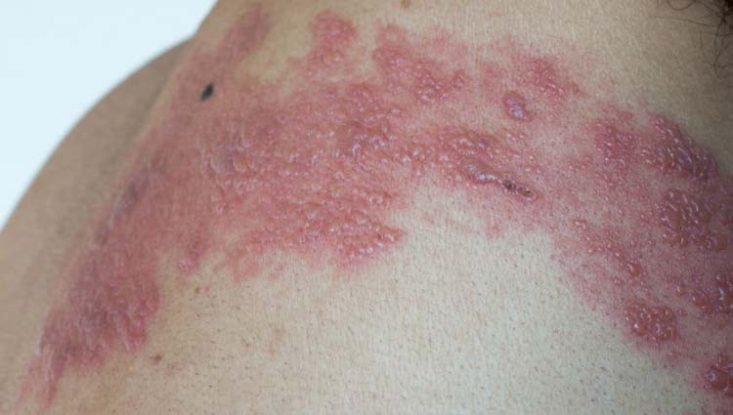What is Shingles? Causes, Symptoms, and Treatments
Shingles is often associated with older individuals, leading many Millennials and Generation Z to believe it's not a concern for them. We should have a clear understanding what is shingles and causes of it. While it's true that the majority of cases occur in people over fifty, it's crucial to note that shingles can affect younger individuals, particularly those with weakened immune systems. Regardless of your age, if you suspect you might have shingles, seeking medical attention is always a wise choice.

Exactly, What is Shingles?
Shingles is a painful viral infection characterized by a distinctive rash, typically appearing in a spiral pattern around the abdomen, and occasionally on the face and other areas. The culprit behind this condition is the varicella-zoster virus, also known as herpes zoster. Despite the inclusion of 'herpes' in its name, shingles is unrelated to cold sores or genital warts. Although it belongs to the herpes family, it's an entirely distinct virus, making it not a sexually transmitted infection (STI). In this article, we'll provide an overview of shingles, its transmission, symptoms, and available treatments.
Symptoms and Treatment for Shingles
First and foremost, shingles cannot be transmitted from one person to another. An individual with shingles can only transmit the virus to someone who has never had chickenpox through direct contact with an open blister. This blister remains infectious until it dries up and forms a crust, which usually takes about a week. It's important to note that the person exposed to the blister would contract chickenpox, not shingles. Consequently, shingles cannot be transmitted sexually. However, if your sexual partner presents a rash and you've never had chickenpox, there is a slim chance of infection through contact with the open blisters.
What Triggers Shingles?
If you've had chickenpox at any point in your life, there's a possibility of developing shingles later on. This occurs because the virus responsible for chickenpox remains dormant in nerves along the spine, head, or neck, and can reactivate, leading to the characteristic rash on body areas supplied by these nerves. Shingles is more commonly observed in individuals aged fifty and older, often associated with a weakened immune system. You may be at higher risk if you are:
- Elderly
- Experiencing high levels of stress
- Dealing with a weakened immune system due to conditions like HIV infection, leukaemia, or lymphoma
- Taking medications that suppress your immune system, such as cancer treatments.
Symptoms of Shingles
Shingles typically manifests as a visible rash around the torso, starting as red spots that evolve into fluid-filled blisters. Over time, these blisters dry out, forming scabs that eventually fall off after two to three weeks. Prior to the appearance of the rash, various symptoms may occur for up to a week, including:
- Tingling, numbness, or pain
- Increased sensitivity to touch
- Itching
- Continuous aching
- Burning sensations
- Fever
- Headaches
- Upset stomach
It's important to note that without the rash, diagnosing shingles can be challenging since these symptoms can mimic other conditions. However, once the rash becomes evident, diagnosis becomes more straightforward. A sample from the affected area can be examined under a microscope to confirm the cause.
Managing a Shingles Outbreak
Shingles can be a painful and uncomfortable condition, but several measures can help alleviate discomfort, including:
- Taking paracetamol to manage pain
- Applying cold compresses to affected areas
- Keeping the rash clean and dry to prevent infection
- Avoiding the use of antibiotic creams
If you suspect you have shingles, consult your healthcare provider promptly. Early diagnosis is essential because antiviral medication can help reduce the severity of an outbreak, but it must be administered within the first few days of visible symptoms.
Crucial Advice
While someone with shingles cannot transmit shingles to others, they can infect individuals with chickenpox. Therefore, it's imperative to avoid contact with those at higher risk, including:
- Pregnant women who have never had chickenpox
- Individuals with compromised immune systems
- Infants under one month old (unless they are your own).
Until the blisters have crusted over, it's advisable to stay away from work or school to minimize the risk of transmission."